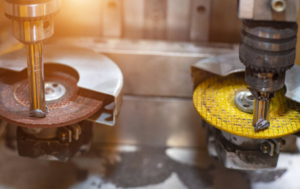Location: Global
The hardware stamping parts industry is witnessing significant transformations, driven by technological advancements, increasing demand for lightweight materials, and the rising trend of automation in manufacturing. As industries such as automotive, aerospace, and electronics continue to grow, the need for high-quality, durable, and efficient stamped components is more critical than ever.
Industry Overview
Hardware stamping involves the process of shaping or cutting metal sheets into required parts using dies and punches. Products range from simple brackets to complex connectors, all essential for various applications. The stamping process offers a cost-effective solution for mass production while maintaining high precision and product consistency.
Growth Drivers
- Demand for Lightweight Materials: As manufacturers strive to increase fuel efficiency and reduce emissions, particularly in the automotive and aerospace sectors, the demand for lightweight materials has surged. Stamping parts made from metals like aluminum and high-strength steel are becoming increasingly popular.
- Rise of Electric Vehicles (EVs): The shift towards electric vehicles is creating new opportunities for the hardware stamping parts industry. EVs require specialized components that cater to their unique designs, driving increased demand for innovative stamping solutions.
- Automation and Digitalization: The integration of robotics, artificial intelligence, and IoT in manufacturing processes is enhancing production capabilities. Manufacturers are leveraging advanced technologies to improve efficiency, reduce costs, and ensure superior quality in their stamping parts.
Challenges Ahead
Despite the promising growth, the industry faces several challenges, such as:
- Intense Competition: With numerous players in the market, companies need to differentiate themselves through innovation and customer service.
- Raw Material Price Fluctuations: Volatility in the prices of raw materials can impact production costs and profitability.
- Regulatory Compliance: Adhering to environmental regulations and quality standards is increasingly important, pushing manufacturers to adopt sustainable practices.
Future Outlook
The hardware stamping parts industry remains optimistic about its future outlook, with continuous innovation and strategic partnerships expected to drive growth. Companies that can adapt to changing market dynamics and invest in advanced technologies will likely thrive in this competitive landscape.
Conclusion
In conclusion, as the hardware stamping parts industry evolves, stakeholders must be agile and forward-looking. By embracing technology, prioritizing sustainability, and understanding market trends, manufacturers can position themselves for success in this dynamic sector.



